Twitter Brand Guide
Twitter’s Landscape
When we look at the landscape of Twitter, we see a market dominated by individuals.
We follow specific entrepreneurs, specialists, entertainers, athletes, creators, celebrities, authors, and the list continues.
But rarely do you see brands dominate Twitter and use it in an effective way.
In contrast, individuals build large, loyal, and valuable audiences.
On the other hand, brands have large audiences with unengaged audiences.
Examples:
- HubSpot
- Mailchimp
- Stripe
This problem that brands create for themself is a massive opportunity for other brands who want to take a strategic approach to Twitter.
Why?
Because when every brand is zigging, your brand can zag.
And when you zag, you can rise to the top by quickly differentiating yourself from the sea of sameness that exists in Twitter’s landscape.
What does that sea of sameness look like?
- Fortune cookie tweets
- Non-native content
- Constant linking out
- Ignorance to relevance
And simply posting non-valuable content for the sake of making you sure that they posted X amount of times on Twitter.
This approach is long gone and a downright engagement killer that makes your content irrelevant on consumers’ feed when Twitter’s oxygen source is relevancy.
Twitter’s Importance
Twitter is where the present lives.
And its oxygen source is relevancy.
It’s where people go every day to learn, to get inspired, to know what’s happening, to know what’s trending, and to discover what’s present in culture.
Meaning people are actively listening.
But, if you don’t speak the right language, you’re not in the conversation.
And those who do interject their brand into conversations accelerate growth.
We’ll touch on this more later.
Content Buckets For An Engaged Audience
When we zoom out and look at content from a distance you’ll notice that effective content primarily falls into three buckets:
1. Inspiration
Content that creates an emotional response in users to be more and do more.
2. Education/Information
Content that brings an understanding of topics and problems around specific domains.
3. Entertainment
Content that engages users with stories, fun, enjoyable, or humorous content.
For some brands, these buckets of content will intersect.
Meaning content that is both inspiring and entertaining.
For example, let’s look at the publication Bootstrappers.
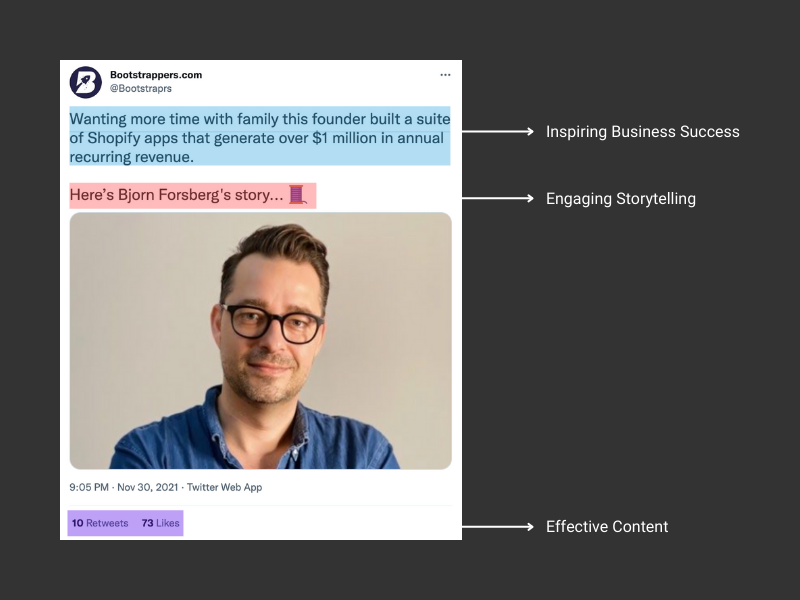
This Twitter thread is an example of a piece of content where inspiration and entertainment intersect.
1. Inspiration - The story of how Bjorn bootstrapped to $1M in ARR is inspiring.
2. Entertaining - How the story is told keeps you entertained throughout the thread.
And so the takeaway is that if you want to build an engaged audience that results in a large following, then focus 80% of your content efforts on inspiring, educating, and entertaining your audience.
Distribution Is Differentiation
What separates the success of content on Twitter between an individual and a brand is how the content is distributed.
For example, Ahrefs creates very educational content but then distributes it on Twitter by linking it to an article on their site.
Example:

In contrast, individual creators will break down their content into digestible chunks that provide value via entertainment, education, or inspiration and then re-direct traffic to an external article.
Example:
Now, let’s take the same article distributed in two different ways.

Same article, but one is distributed via a thread, and the other is distributed by linking out.
The difference?
Just over 10x the engagement.
Why does this work?
Because the most effective content is distributed in a way the algorithm and users favor.
As a result, the platform rewards the content with reach, making it more discoverable to an entirely new audience and your existing audience.
For brands, this means being able to distribute their inspiration, education, or entertaining content in a way that is native to Twitter.
Relevancy Is Growth Fuel
Now how do you take these content buckets and fuel them for explosive growth?
By intersecting them with relevant moments in culture.
Meaning, when people are talking about X, then you should create content about X.
Because instead of needing to start a new conversation, you can join an existing one where attention already exists.
And by creating content specific to these conversations, you increase your chances of going viral.
Brands Doing Twitter Right
We’re going to run through 5 brands using Twitter in an effective way.
Brand: Morning Brew
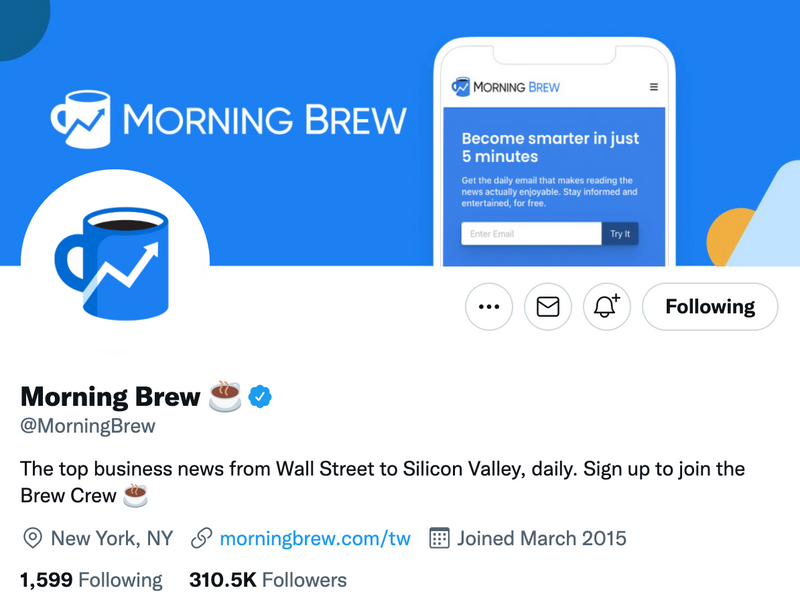
What They Do Right:
MorningBrew does a phenomenal job of intersecting education/information with entertainment.
This has fueled the development of their unique voice. One that is humorous and puts a twist on tech and startup news, and humanizes their brand.
They enhance this combination of content by injecting themself into cultural moments at scale.
Meaning, instead of trying to start the conversation, they join it.
When done right, this can put your brand at the forefront of trending topics and conversations, leading to explosive growth.
Examples:
During a 4-day run in October, MorningBrew added 25,940 followers, taking them from 259,632 followers to 281,504.

They did this by ditching the content calendar and quickly reacting to stories in big publications and trending topics on Twitter.
And approaching every story with multiple angles to maximize their potential to go viral.
Story: Facebook Name Change
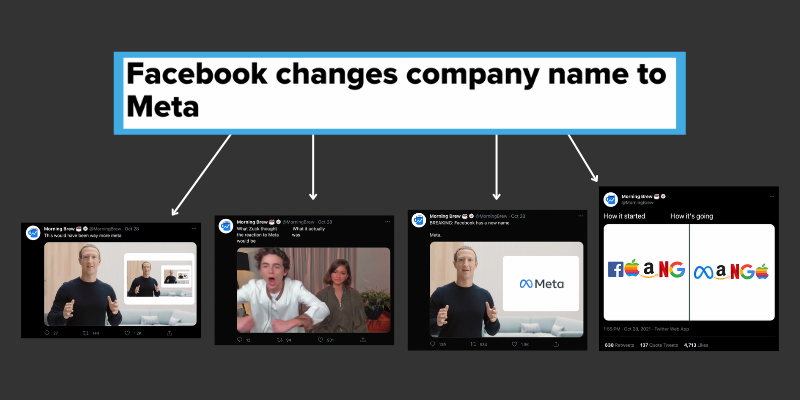
Story: $SHIB Wallet
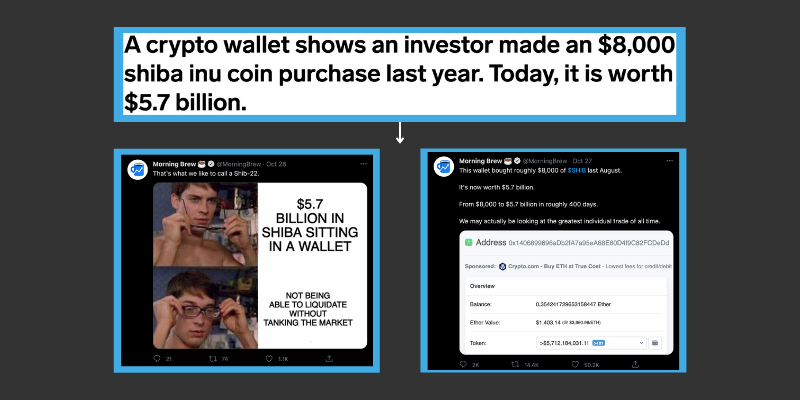
Story: Elon Musk Net Worth
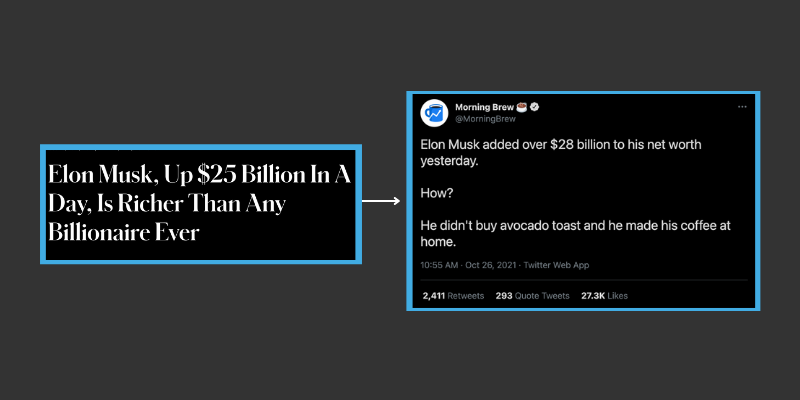
Also, here’s a great thread by Toby, who ran Morning Brew’s Twitter account for the last year on how he approaches content.
Brand: Wendy’s
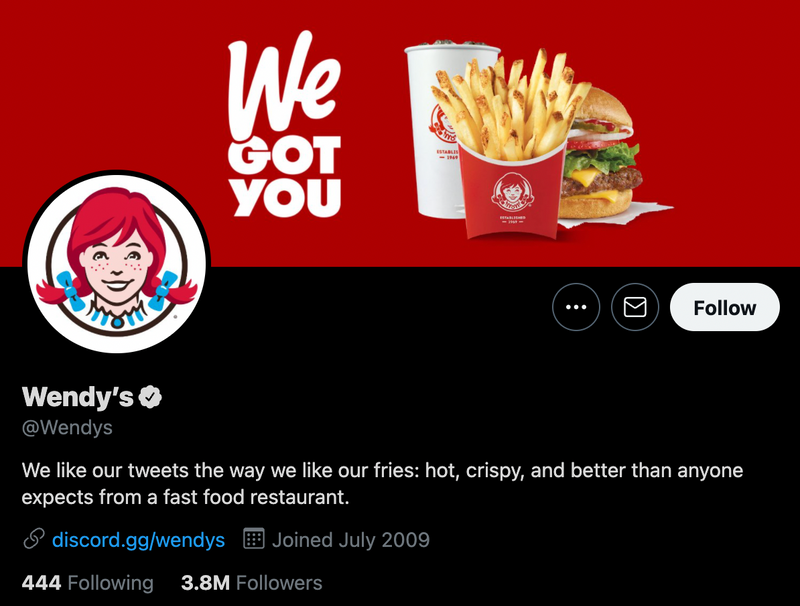
What They Do Right:
Wendy’s is by far one of the most entertaining brands on Twitter. Because of this, they’ve used Twitter to differentiate their voice from any other fast-food chain.
Where most fast-food chains use Twitter to update customers on their menu changes, Wendy’s uses Twitter to entertain their customers.
And like MorningBrew, they take to Twitter to inject their brand into big cultural moments knowing these conversations lead to conversions.
The result is the second-largest fast-food chain account on Twitter, only behind Mcdonald's.
Examples:
We’re going to look at two examples by Wendy’s that I believe are great.
The first one is similar to Morning Brew, where Wendy’s responded to the news of Facebook changing its name to Meta with its own tweet.
It resulted in over 21k+ new followers in 48 hours, again showing the potential of hacking relevant conversations.
Example:
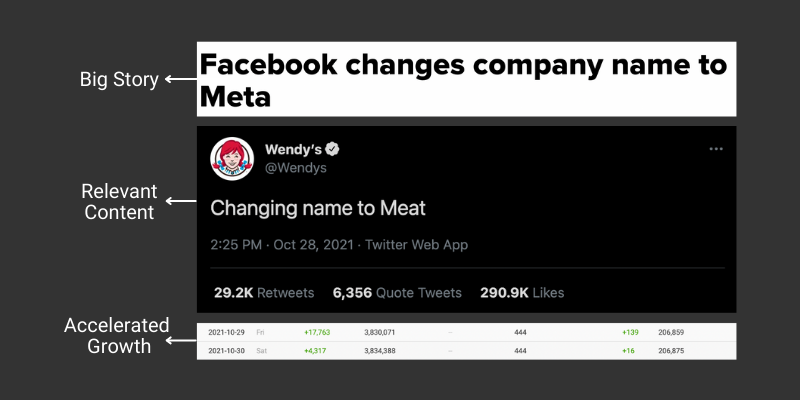
The second example was on Feb 11th, when Wendy’s celebrated National Roast Day and roasted just about every account on Twitter, from Ad Week to Toyota.
This epic roast session not only trended on Twitter but took over what felt like every feed and earned millions on millions of impressions.
And every big publication wrote about Wendy’s epic roast session.
The result was two weeks of explosive growth.
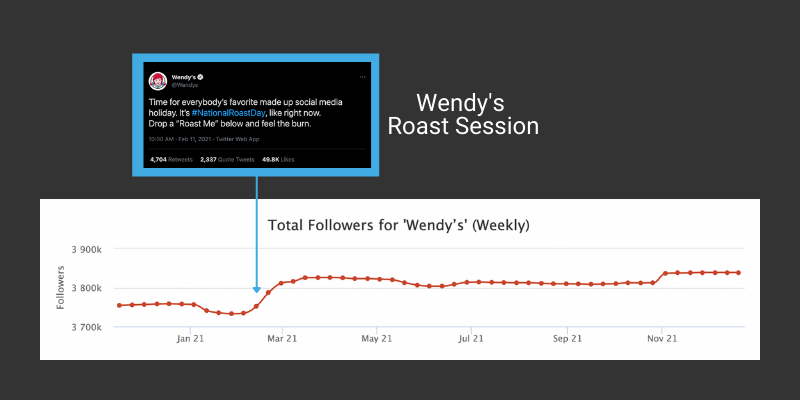
Here’s a glimpse into the roast session:
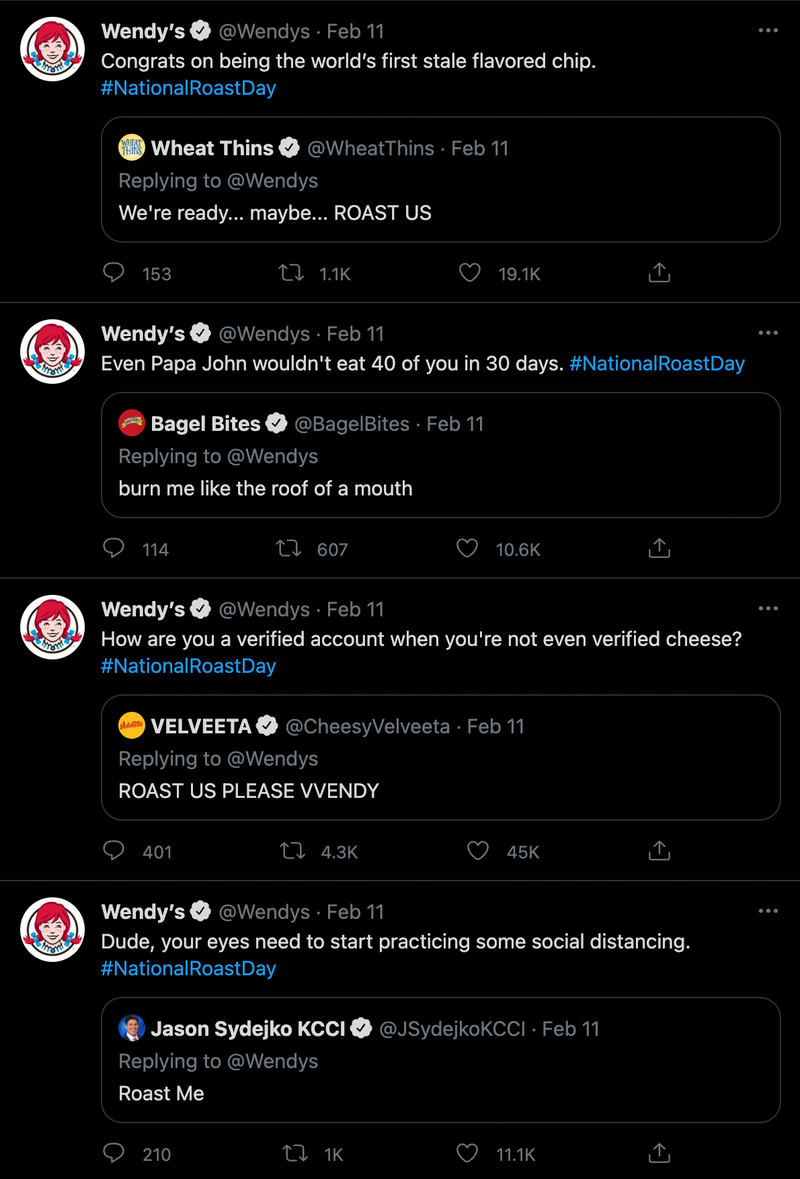
Brand: Gymshark
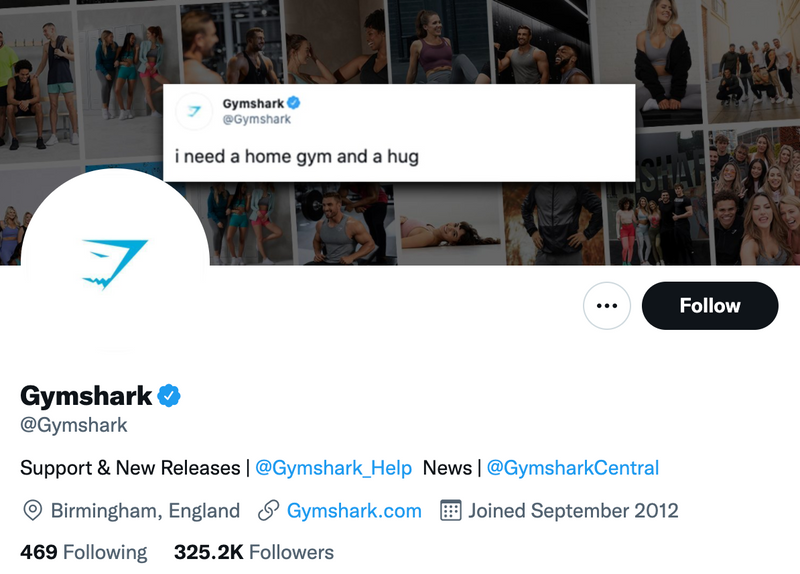
What They Do Right:
Gymshark does a great job of creating inspirational and entertaining content that feels as if your friend sent it to you via text.
This brings up a great framework I’ve learned: Think in text messages, DMs, and WhatsApp.
Meaning, create content that would be shared in those spaces between friends.
And this is what Gymshark does while having a deep understanding of its audience.
Examples:
Gymshark’s content falls into two content types and also, into two content buckets:
1. One-Liners
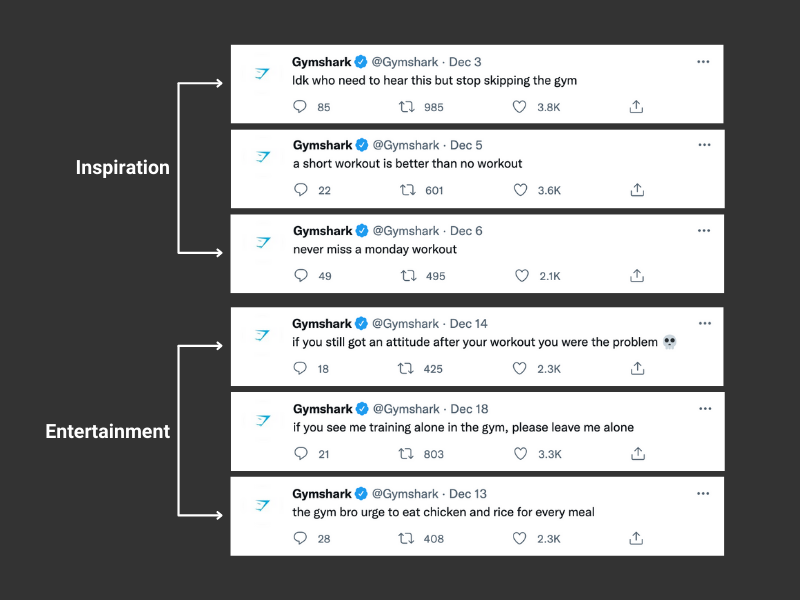
2. Memes
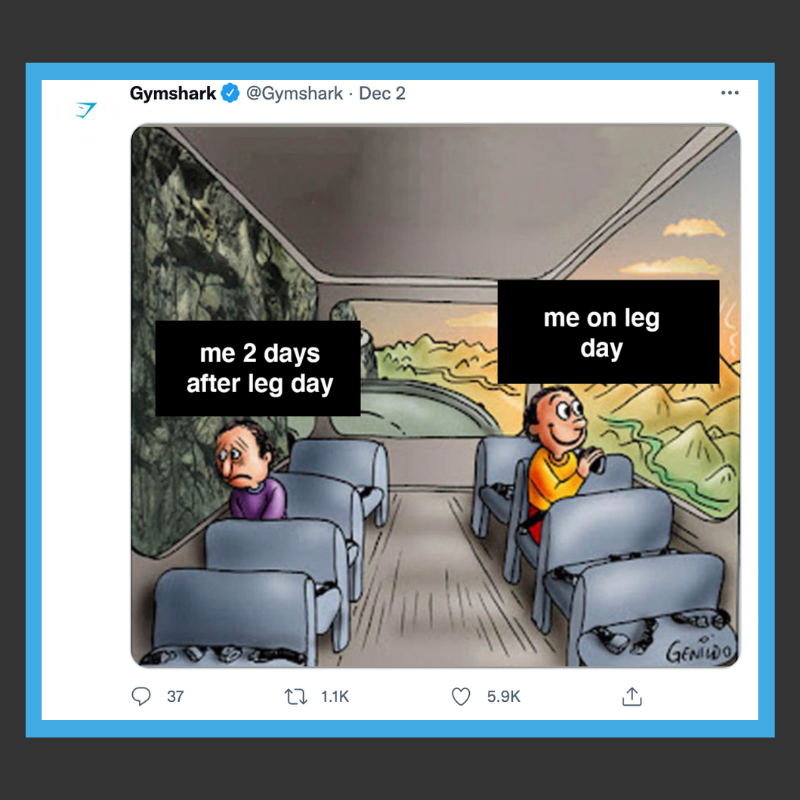
Brand: Notion
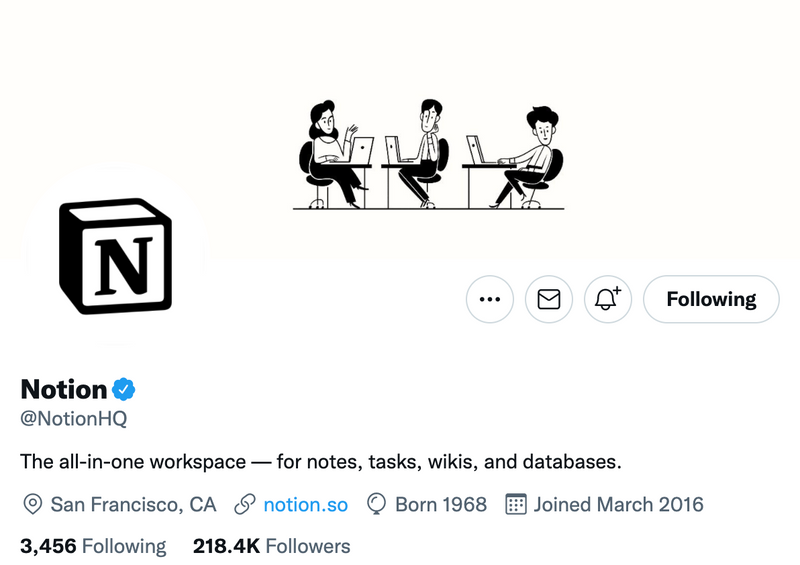
What They Do Right:
There are two approaches from Notion to take note of as they go hand in hand to accelerate growth.
The first is, Notion has ambassadors that create content on their behalf.
For example, Easlo is a Notion ambassador whose Twitter page is saturated with Notion templates, tricks, tips, and guides.
This leads to the second tactic.
Notion shares tips, tricks, and quick “how to” clips that teach you how to optimize your Notion experience.
Where the ambassadors generate new followers.
Notion’s content converts those followers to users with its content.
Example:
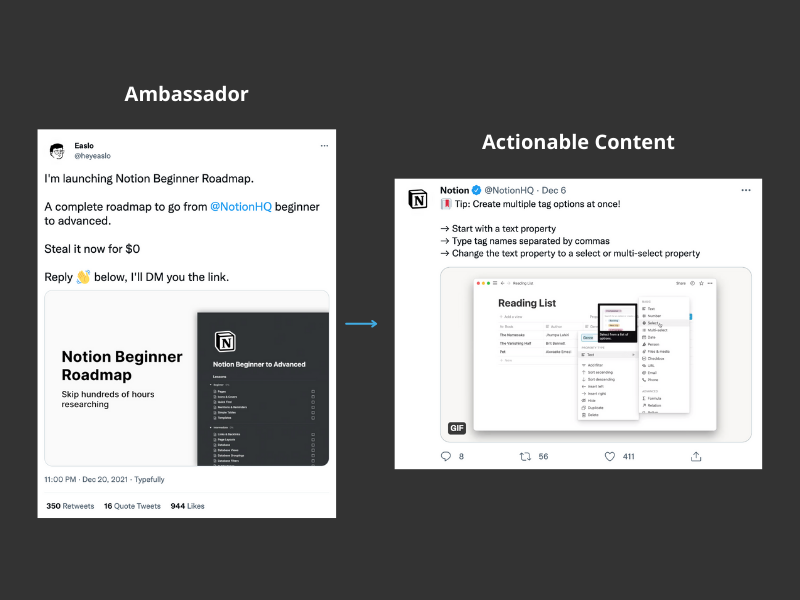
Brand: Demand Curve
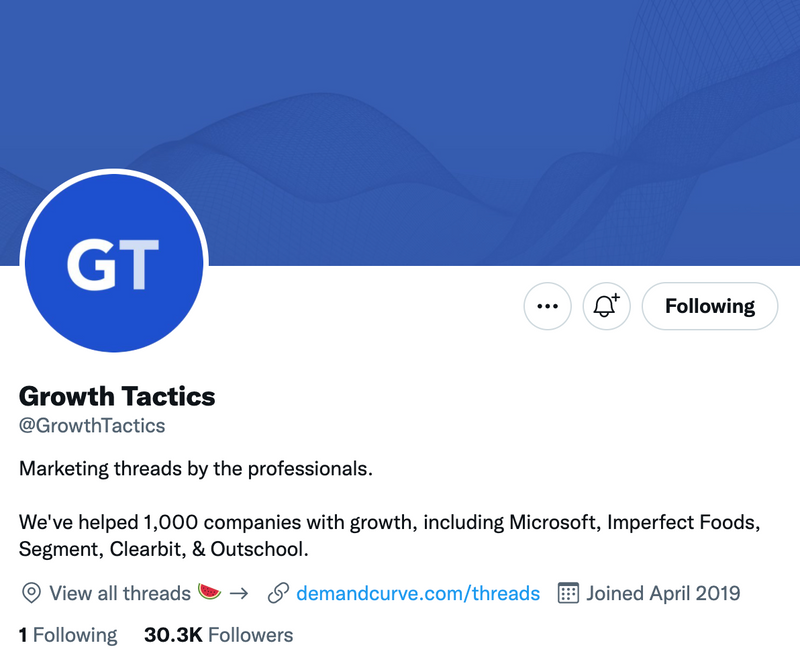
What They Do Right:
Unlike most brands, Growth Tactics doesn’t saturate its feed with links.
They take those same articles and curate them via Twitter threads providing immense value to users on the platform without needing to leave the platform.
As a result, saturating your feed with valuable content.
A recipe for success.
Examples:
When we observe the spikes in growth and the content that was posted on those days, you’ll see Growth Tactics posting a valuable thread that educates their audience.



